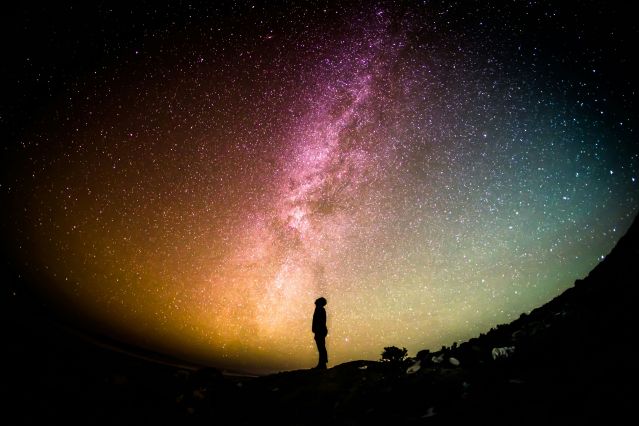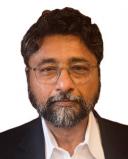Beauty
The New Romantics
Are we witnessing a movement in science and the arts?
Posted March 15, 2024 Reviewed by Tyler Woods
Key points
- In the Digital Age, we are in a new state of disenchantment, as people increasingly feel lonely and alienated.
- A collection of artists, thinkers, designers, and scientists are converging on a similar remedy.
- This like-minded cohort promotes art, aesthetics, and nature as antidotes to this modern malady.
- A new Romanticism may be stirring, a modern incarnation of a movement that emerged over two centuries ago.

A Modern Malady
On January 30, 2024, the White House Domestic Policy Council and National Endowment for the Arts co-hosted an event called, "Healing, Bridging, Thriving: A Summit on Arts and Culture in our Communities." The title of the event begs questions. What needs to be healed? What is to be bridged? Why aren’t we thriving?
Soon after, on March 1, the wellbeing organization Therme U.S. hosted a panel at the Kennedy Center with the title “We Are Connected Through Trees: New Frontiers of Biophilia." The panel (which I was a part of) discussed projects that “reinvigorate our relationship to the natural world—from experiments in biophilic design, community-led forest bathing, and radical art installations…” The very notion of re-invigoration implies a state of depletion—that something vital has been lost.
These two gatherings, among others of their kind, point to a current state of discontent and alienation. They might also represent the beginnings of a reaction to this malady—a New Romanticism.
The Old Romantics
The old romantics reacted to the unfortunate consequences of the Industrial Age. The late 18th and early 19th centuries produced profound scientific, cultural, and political changes in Europe. The scientific revolution changed how we thought: animals, plants, and matter could be measured and classified and their properties quantified. Nature could be grasped. Otherwise, mysterious forces like heat, light, steam, electricity, and magnetism were harnessed to drive progress. The Industrial Age, in the wake of the scientific revolution, produced innovations like steam engines, textile mills, and the telegraph. Life changed dramatically. Nature was domesticated, resources extracted, and presumably, people’s lives improved.
Despite good intentions, the material benefits of the industrial age came at a price. Cities were polluted, workers were oppressed, and nations fought for resources. People felt removed from nature and each other. Prosperity for some meant peril for others. An extractive approach to the world encouraged the cultivation of monoculture cash crops like indigo, sugar, and cotton. A distancing of the “other” and a push for profit made it easier to view some people as property to be traded, bought, and sold.
Reacting to the ills of the time, the Romantics tried to transform the prevailing zeitgeist. The movement, hard to define and lacking clear boundaries, reoriented people to the importance of their inner lives. In Germany, at the end of the 18th century, a group of thinkers opposed a view of progress in which quantity replaced quality and reason triumphed over emotion. Led by Johann Wolfgang von Goethe, the poet-playwright-scientist, the group included intellectuals, poets, performers, and scientists1. Alexander von Humboldt, the most famous scientist of the time, emphasized our integral connection to nature. Romantic sentiments spread to and took root in England with poets like Coleridge, Keats, and Shelley. Despite differences, the Romantics, as a group, underscored the importance of emotions and viewed the world as an organic whole rather than a grab-bag of mechanical parts. Importantly, art, aesthetics, and a deep connection to nature were antidotes to their diagnosis of an age of disenchantment.
The New Romantics
The world today seems once again fractured. Analogous to how the scientific revolution gave way to the Industrial Age, the information revolution of the 20th century is giving way to the Digital Age of the 21st. Information, itself a mysterious force, is being harnessed presumably for good. Data, some say, is the new oil. A web encircling the wide world has made the planet smaller, more connected, and more graspable. The Digital Age has accelerated science, eased communication, enhanced commerce, created jobs, democratized access to knowledge, and improved our material lives.
Despite the substantial gains of globalization and information technology, many people remain unhappy. The Surgeon General identifies loneliness as an epidemic. Teenagers in America are deeply pessimistic and more anxious, depressed, and inclined to suicide than previous generations. Teachers are burned out and education systems are under assault. The American healthcare system is creaking under the weight of its bureaucracy. Civic values and political institutions are crumbling. Artificial intelligence, the hypertrophic child of the Digital Age, is making it difficult to trust our senses and tell fact from fiction.
We are haunted by failures too big to comprehend. Will we face mass extinction if we disregard the climate crisis? Are we raising machines that will grow up to dominate us? The signs and symptoms of the current malady are similar to those to which the Old Romantics responded. The good intentions of science and technology have gone awry. An extractive and ultimately exploitive approach to the world renders many workers alienated and demoralized. People are disconnected from nature and fragmented from each other.
Like two centuries years ago, an unlikely group of people are converging to combine science, nature, art, and aesthetics. Traditional disciplinary and professional boundaries are breaking down. World-class performers like Renée Fleming and David Byrne are talking about neuroscience. A new generation of architects and designers is preoccupied with neuroscience and re-evaluating our place in nature2,3. Artists and intellectuals are emphasizing our emotional connection to beauty. Neuroscientists are investigating aesthetic experiences and probing the reasons why art matters4,5. The World Health Organization commissions large-scale studies on the value of the arts. Emmeline Edwards at the National Institutes of Health is beginning to fund research in the arts and Sunil Iyengar of the National Endowment of the Arts is supporting scientific research labs. Weaving these threads together are ideas that nature can be restorative and the arts can be transformative.
Cultural movements, hard to define and lacking clear boundaries, are typically labeled in retrospect. At the risk of making a premature claim, I offer that we may be witnessing a new Romantic resistance to a current disenchantment. Once again, art, aesthetics, and nature might be critical ingredients for countering this modern malady.
References
Wulf, A. (2022). Magnificent rebels: The first Romantics and the invention of the self. Knopf.
Ruggles, D. (2018). Beauty, Neuroscience & Architecture. Denver, CO: Fibonacci, LLC.
Browning, W. D., & Ryan, C. O. (2020). Nature inside: a biophilic design guide. Routledge.
Chatterjee, A. (2014). The aesthetic brain: How we evolved to desire beauty and enjoy art. OUP US.
Magsamen, S., & Ross, I. (2023). Your brain on art: How the arts transform us. Random House.




